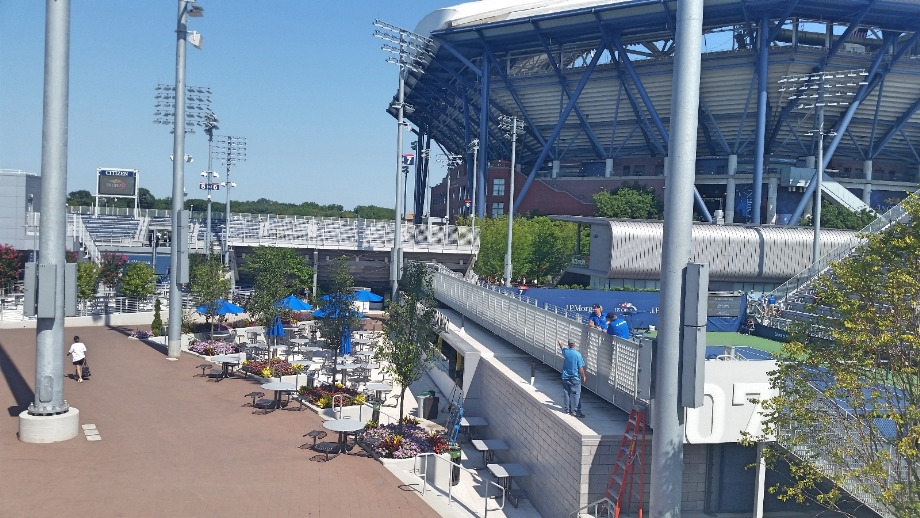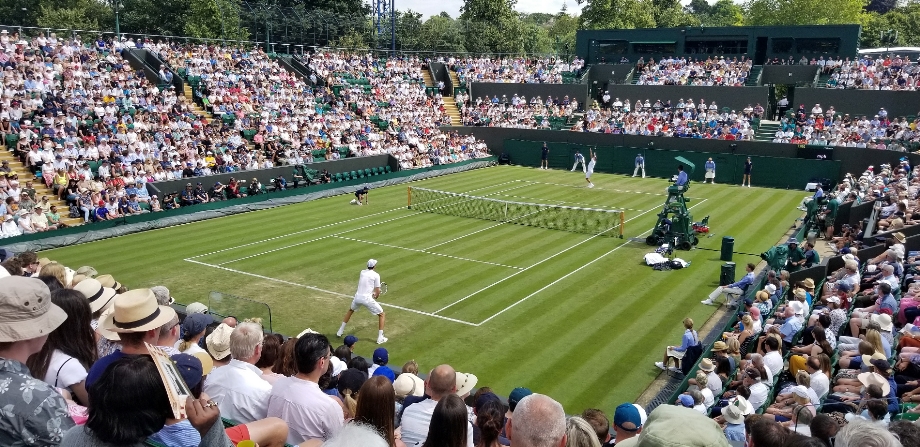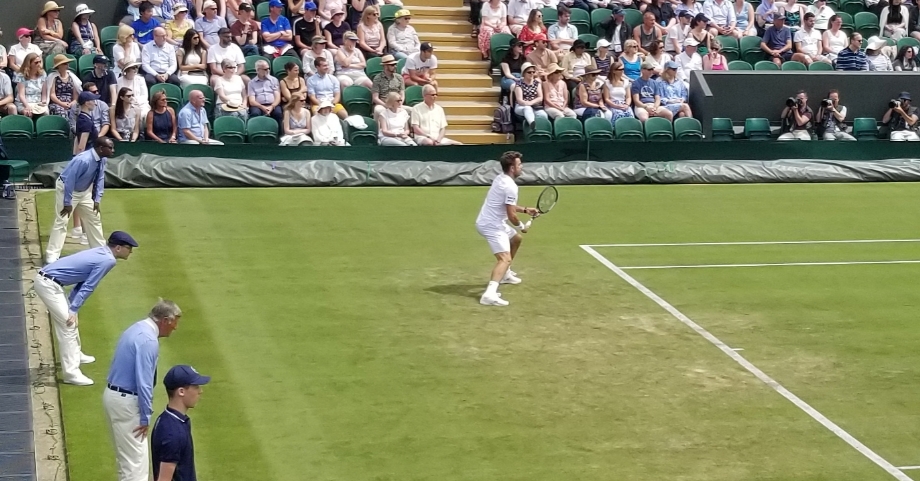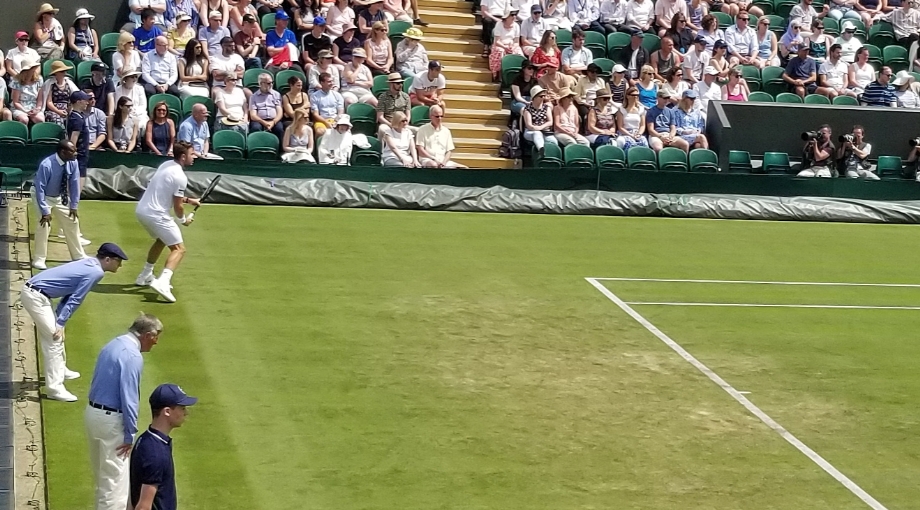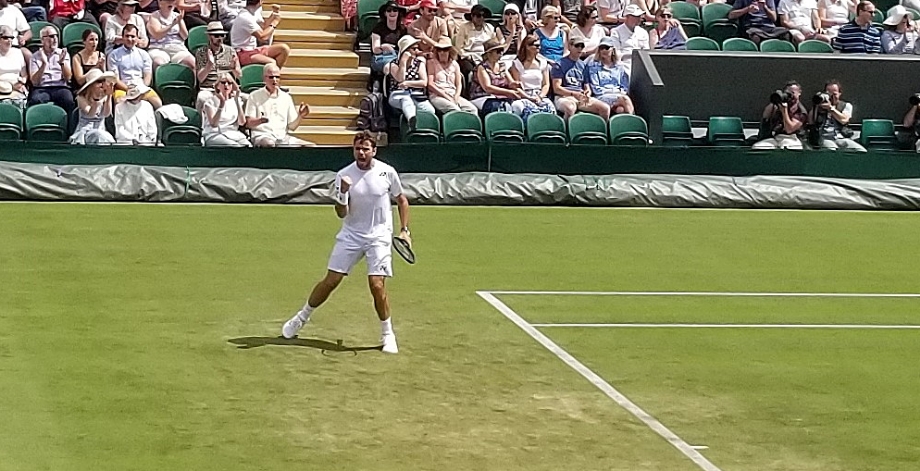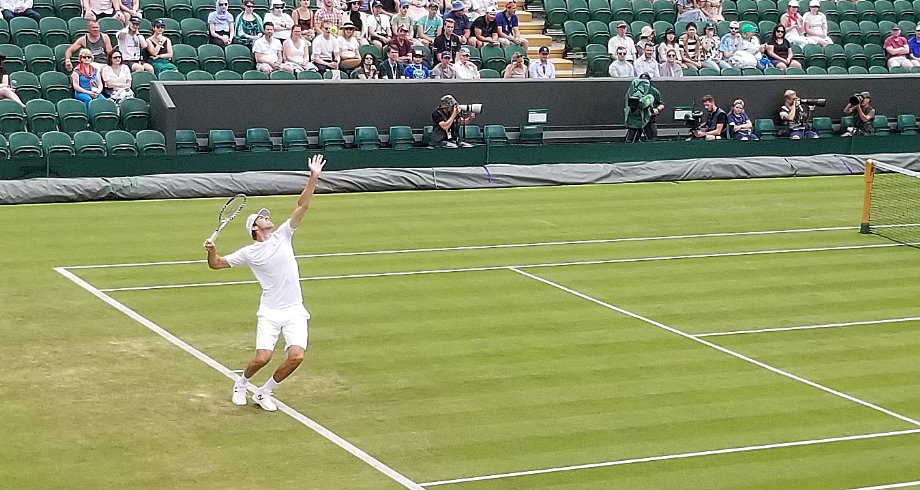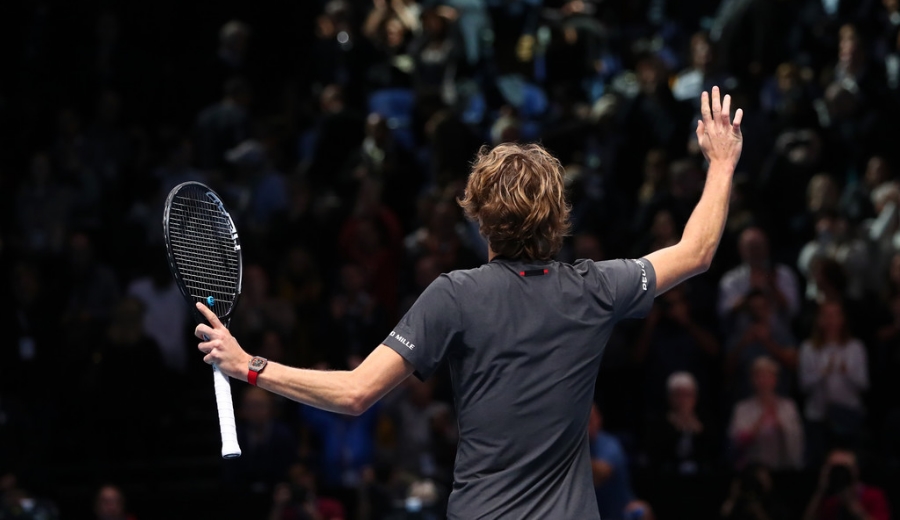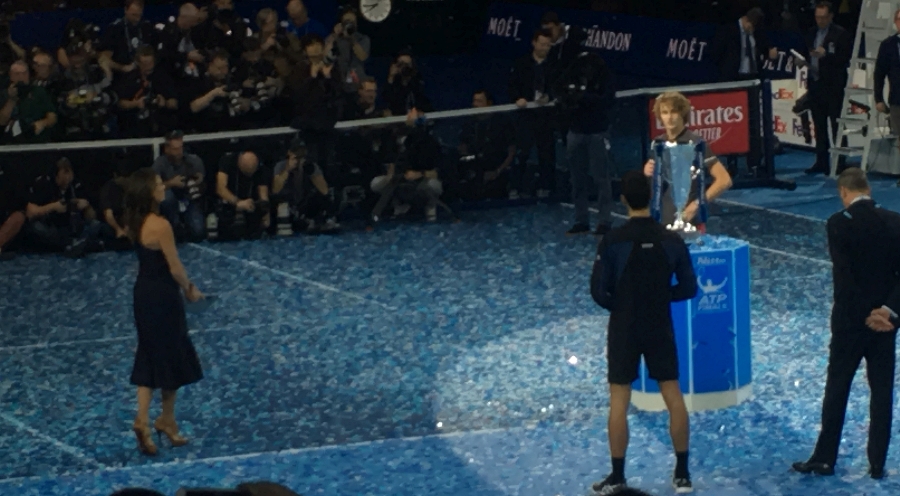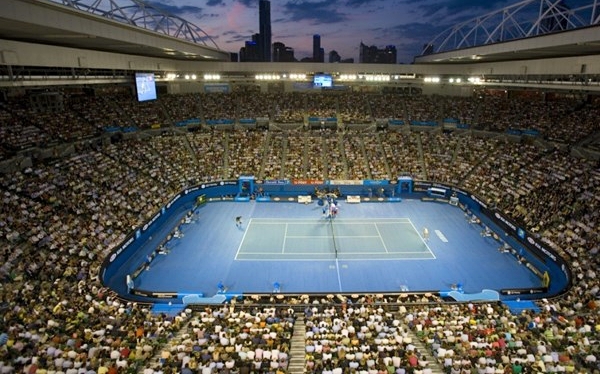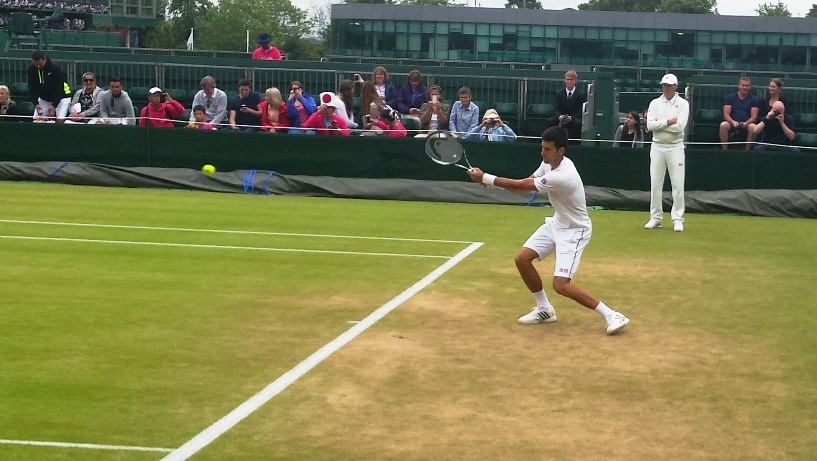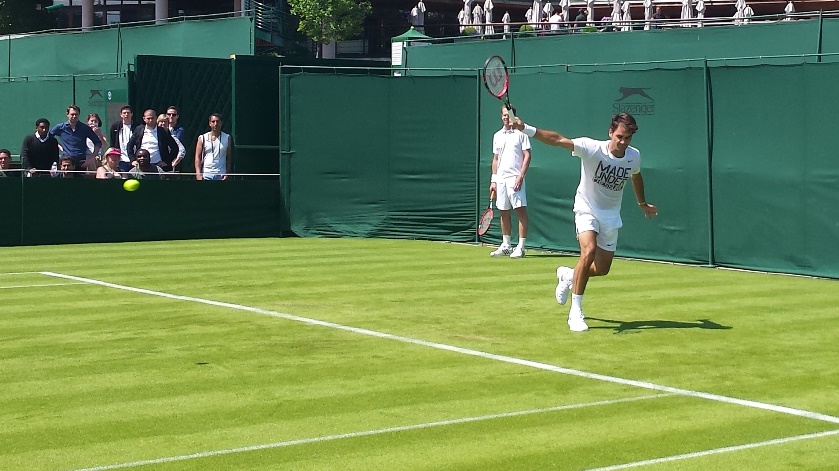This encounter between the 16th seed Stan Wawrinka and Dominik Koepfer appeared to be intriguing on paper in the sense that you had one player who tasted glory more than once in the Majors but slipped off a bit in the aftermath of his knee injury (and operation) in the late-summer of 2017, and another who has been making significant progress into the top 100 ATP since the fall of 2019, currently enjoying his highest career ranking of 61.
I was interested in seeing where Stan stood with regard to his physical shape and his form (he hadn’t played the tournaments in the US, opting to begin his post-Coronavirus season on clay in Europe), and what tactics Koepfer would tap into in order to do challenge Stan’s potent game, so I decided to settle in front of the TV and watch the match with an early morning (5 AM) pot of coffee ready to be consumed.
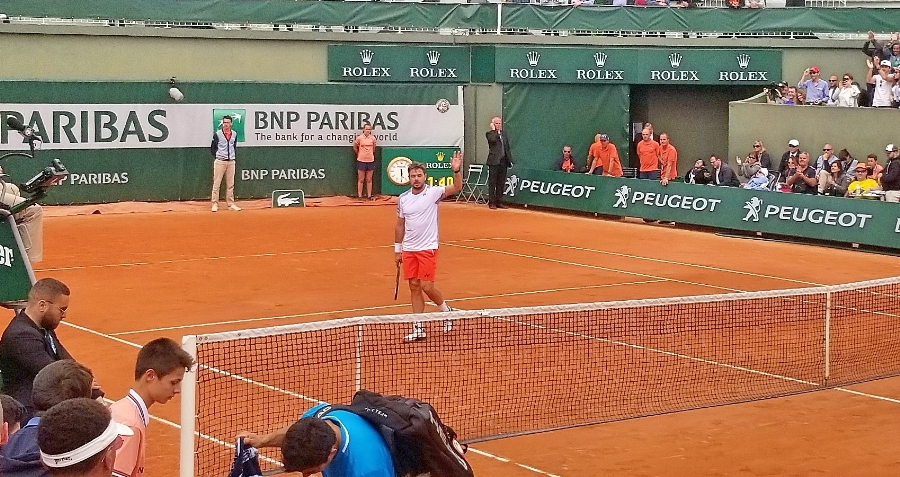
Both players began the match somewhat subdued, although it rapidly became clear that the amount of success Wawrinka was going to have with his accelerations, and how many of those Koepfer was going to be able to get back from far behind the baseline where he seemed to hang out, would determine the outcome of at least the first set.
The first key point arrived at break point for Wawrinka when Koepfer served at 1-2. That test ended in Koepfer’s favor when Stan missed an easy forehand approach deep.
Next came Koepfer’s chance to take charge of the set when he led 0-40 on Stan’s serve in the next game at 2-2. Koepfer missed a backhand in his first break-point chance and Stan erased the second one with forehand down-the-line winner (which shaped to become his bread-and-butter shot for the first two sets, along with the inside-out one), following it up with an overhead winner at the net to get back to deuce. He saved a fourth break point at ad-out with his signature backhand down-the-line acceleration that Keopfer could not get back, and eventually survived the game.
Little did the left-handed German know at that time that he would find himself down two sets before he could get a glimpse of another break-point opportunity. Wawrinka began to steadily raise his level from that point forward. Koepfer also played into Stan’s game (and continued to do so until the third set) by not testing the one area where he could have made some inroads, his lefty forehand cross-court to Wawrinka’s backhand, preferably in the form of a high-bouncing topspin to force Stan into making contact above his shoulder level on his one-handed backhand – remember how Nadal exploited that in the French Open final in 2017. Koepfer strangely tried this only once in the set, in the first point of the 4-3 game, and Stan framed the backhand for a mistake. I am at a loss for an explanation as to why he did not resort to that pattern more.
Koepfer did not serve enough wide serves on the ad-side either, something that he usually does well with his lefty slice serve, nor did he try to kick it high to the T on the deuce side, again making Stan start the point with his least favorite shot. Instead of defending high and deep during rallies, he tried to drive balls from far behind the baseline, giving Stan the pace that he seeks in order to generate his own explosive ground strokes.
As for Stan, I know that people cannot marvel enough over his backhand – and don’t misunderstand, I like it too – but as is usually the case, it was his underrated forehand that caused most of the damage. Koepfer found himself deeper and deeper in the back of the court to scramble for the barrage of Stan’s forehand accelerations which also allowed the Swiss to successfully chip in the occasional drop shot for good measure (not so successful after the first set though, I must note).
Koepfer’s armor suffered the its first dent in the 3-4 game on his serve (you could sense this coming from the way the match was developing) when he missed two cross-court backhands in a row wide at 15-15, putting him down two break points. Stan generously contributed to his opponent’s downfall with yet another thunderous inside-in forehand to gain the conclusive lead for the set. It was over in 34 minutes, 6-3 in Stan’s favor, a solid set in which he made seven unforced errors (my count) and 10 winners.
The second set was different in the sense that I am not sure if Koepfer could have done anything to stop the Wawrinka train. The Swiss was unstoppable, putting on full display the best version of vintage “Stan the Man” that many remember from his three runs to Major titles. It was one explosive shot after another, often leaving Koepfer helplessly watching balls zip by him meters away. Stan grabbed a 4-0 lead, hitting seven clean winners off ground strokes in that stretch, along with another half dozen accelerations that the German could not get back in the court. Just to illustrate how vulnerable Koepfer must have felt, he committed only three unforced errors in the second set, but lost it 6-2, probably having something to do with his opponent hitting 13 clean winners.
Koepfer, not one to fold no matter how insurmountable a challenge he faces, kept plugging away. And this time he appeared to make a couple of modifications to his game plan. For instance, he began to unleash on returns in effort to take away Stan’s 1-2 punch, and did finally add some high and deep cross-court forehands into the mix (though still not enough in my view, but see the 3-2, 15-0 point for one example).
He survived through two break points on his first two service games thanks to a more erratic Stan making an appearance in the third set. The pendulum eventually swung his way when Stan served at 3-4 and faced a break point at 30-40. The Swiss missed an inside-out forehand winner attempt wide and Koepfer earned his first (and only) break of the match. That point was also emblematic of the third set in general. In a complete reversal of the second set, and perhaps with an assist by Koepfer’s modifications noted above, Stan struggled to find the court whenever he went for winners. When the scoreboard showed 4-3, he had already committed 15 unforced errors (finished with 18), more than in the first two sets combined. His first-serve percentage also plummeted to 55% for the set, down from 75% in the previous one.
Koepfer appeared to have sunk his teeth into the match and the contested points in the very early portion of the fourth set seemed to confirm that. Until, that is, Koepfer unexpectedly missed two routine forehands in a row deep to find himself down 15-40 in the second game. Stan seized the opportunity with another acceleration on his forehand for the break. That is all it took for Stan to recapture his form of the first two sets and race to the finish line in less than 20 minutes, with the final score showing 6-3 6-2 3-6 6-1.
The match lasted two hours and eight minutes and there were plenty of encouraging signs for Wawrinka’s fans who are longing for another stellar run from their man in a Major. I am not convinced yet, because in a match where his opponent played into his game for the most part, he still showed enough glitches to inject some doubt into his capacity to consistently perform at his top level through a best-of-five-set encounter. Don’t get me wrong, he showed that his best is still within reach, especially during the second set and most of the first and fourth sets. He will undoubtedly need to iron out the bad patches though if the much-anticipated encounter with Thiem is to occur in the fourth round.
Wawrinka faces the wild-card participant Hugo Gaston next, so as far as lovers of spectacular one-handed backhands are concerned, their dream match remains very much within the realm of possibility.

